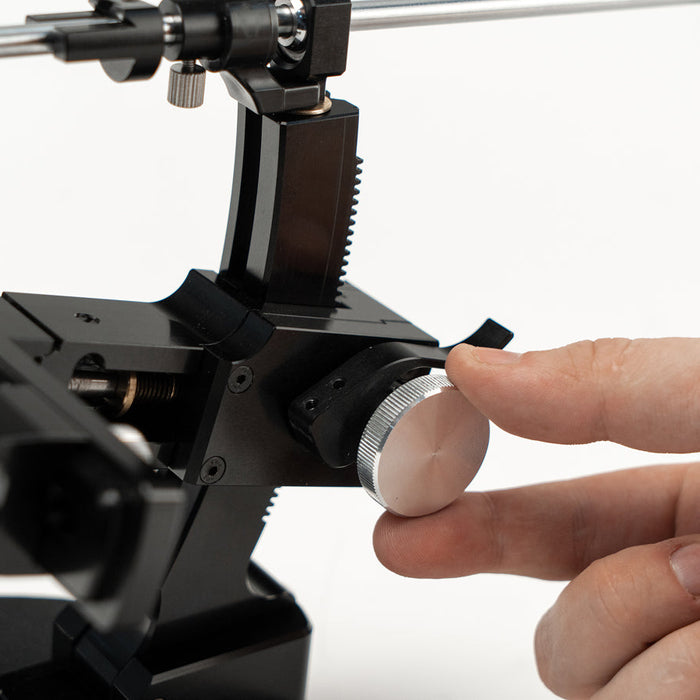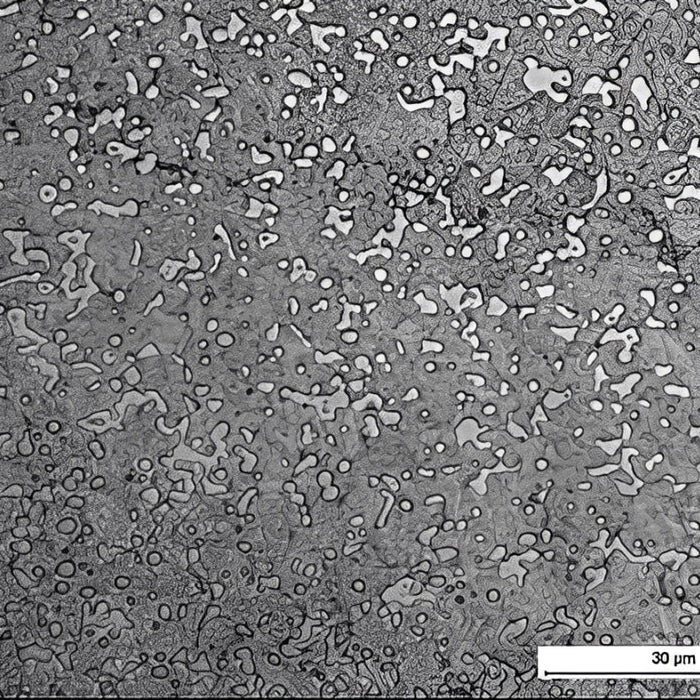Introduction
Leather strop has been used as a material for stropping blades for quite some time. It is most common for hairdressers and barbers to use a special leather strop for honing dangerous razors. Leather, glued on a wooden bar with or without a handle, is more often used for stropping knife blades and other cutting tools. One can use special pastes with this technique.

The subject of the use of leather strop in sharpening is somewhat extensive and, in some points, controversial. The average user is likely to be indifferent to all the terms, as they mainly have two main questions: "Why is my knife blade not as sharp as I want it to be?" and "What should I use to make it sharp?" On a household level, it all comes down to simply making the blade sharper.
1. How sharpening, stropping, and finishing processes feature leather
1.1. Sharpening
Knife sharpening is the process between roughing and finishing. It is a step in which the surface of the secondary bevel and the cutting edge becomes considerably smoother than in the previous step.
From a purely technical point of view, sharpening and grinding differ only in the amount of the removed material. You can use smaller abrasive stones to remove large burrs and to remove significant scratches, this makes the surface of the secondary bevels smooth and the cutting edge becomes more uniform.
The burr is also formed at this stage, but it is much finer. Before moving on to the next finer abrasive or to another step, you only need to make a couple of light pushing and askew strokes with the abrasive.
1.2. Finishing
Because coarse abrasives leave scratches and can leave a small burr on the cutting edge during sharpening, sharpeners often resort to the next step - finishing. Improving the quality of the processed surface of the secondary bevels is ensured by the thickening of some metals when they come into contact with certain natural abrasives. Some abrasives can also have a chemical effect on the secondary bevel surface, protecting them from possible corrosion. There is almost no metal removal during the finishing process.
1.3. Stropping
Knife stropping is used to restore sharpness after some minor wear. The degree of wear on the cutting edge can be different and therefore different tools are used for the honing process.
Classic stropping with fine pastes on a leather strop is associated with dangerous razors. You should be aware that razor blades and knives have significant technological differences in sharpening angles and bevel structure.
The difference in strength between leather and paste has an opposite effect on the cutting edge of the razor and knife. While it is possible to sharpen the razor this way, the cutting edge of the knife can get dull if the strop is not used properly.
Therefore, trying to hone a knife using a method that you usually use to make a razor sharp can lead to the opposite result.
2. How to choose wooden and leather strops
When choosing consumables like a wooden or a leather strop, the quality and density of the leather and the proper flat surface on which the leather is glued are fundamentally important. If the surface of the leather and the base is too soft, it can lead to rolling of the cutting edge and bad cutting qualities.
2.1. Leather strop on a wooden blank
You can buy a leather strop glued to a wooden blank with a compound with a certain grit already applied or without any compound. The advantage of a blank without any compound is that it has a more flexible use. You can also apply the compound yourself on a clean leather strop if needed.

If you are not sure if you will use it right, you can buy a strop with a layer of a compound already applied. The strop can be one sided or double sided. One side usually has a coarse grit compound and the other side has a finer grit compound, which will provide a finer finishing.
2.2. Leather strop on an aluminum plate
If you want to use a sharpener for stropping, you can use leather glued to an aluminum plate. In that case, you should have a kit of them for different pastes.

Always apply the compound to the strop without melting it or using anything else, and rub it into the leather surface with light motions without too much pressure. If the compound is hard and has no bright color, it is difficult to visually control the process of its spreading. But, after applying it to leather strop, even if you can not see any layer of compound applied, it remains in the pores and works. You can tell by the dark traces with a metallic sheen that appears on the leather after you start polishing.
Any dirt from the leather strop surface (metal dust and compound residues) can be removed mechanically, e.g. with the knife spine. Washing off dirt from the leather with solvents is not a good idea, because it can over-dry the leather and deform its surface, which will make it useless.
If you do not keep the proper angle, even with good quality leather on a wooden strop or an aluminum plate, bad things can happen, especially if there is a polishing compound on the leather strop surface.
The reason is simple and was proved with the use of a sharpening device. When stropping with edge trailing motions with a leather strop on an aluminum plate and gradually raising the angle by 0.2 degrees up to 1 degree, you will find a definite degradation in the cutting quality after pre sharpening the 440c steel with a hardness of 58-59 HRC or less. If one does not have enough skill, the chances of ruining the cutting edge increase.
Besides that, there may be scratches on the transition between the planes of the bevels and the secondary bevels, or the transition between the planes may get somewhat over-polished, which is also not good. Thus, the blade may appear slightly different from both sides and may simply lose its neat finishing and aesthetics. These kinds of physical defects are annoying, but they are not significant and will not affect the overall performance of the blade and can be fixed later.
The mechanics of honing with a leather strop with both manual way and with a sharpener are quite simple:
- Try to maintain the same angle.
- Remember to work with edge trailing (pulling) motions, because it is easy to damage the leather surface
- Make 10-20 stropping motions per each side
- You can alternate motions from the tip to the ricasso (heel of the blade) and vice versa
- If you use a sharpening tool with a guide, set the same angle or make it a little greater. Everything else remains the same.
- Use abrasive pastes and emulsions when needed
If you also read the work of John D. Verhoeven, "Experiments on Knife Sharpening," we can draw several conclusions from all the experiments:
- They used different synthetic abrasives for sharpening, which increased the quality of processing of secondary bevels
- Natural abrasive stones can increase the density of the blade's secondary bevel surface and make the cutting edge more stable
- Polishing with leather strop can be done with diamond and chromium oxide pastes
Conclusions
To avoid bad results during stropping, the leather must have a very high density and the paste should only be applied to the polished smooth grain side, and not to the flesh side.
Remember, stropping is not the same as or a substitute for finishing if finishing is necessary. The effect of even the densest leather is simply no match to the effect of high quality finishing abrasives on the blade's secondary bevel.
You can experiment with leather and various pastes, but you must remember that a poorly sharpened blade cannot be finished with leather and paste.
Many users are under the false impression that there is a way to get the sharpness of a folding or fixed blade knife equivalent to the sharpness of a dangerous razor. For some knives you can get this level with great difficulty, but for most not. The difference in blade geometry will not allow you to achieve comparable results, but there is no need for them. The reason is the purpose of the blades.
If you want to deburr or just hone the cutting edge of the knife, you should hold the blade at a greater angle than the existing one on the blade. This means that the bending property of the leather can simply ruin the cutting edge, or at least make it convex.
Polishing the secondary bevels makes the knife look nice, but it is not a reliable indicator of knife sharpness, it is just an option. Secondary bevels may shine, but the knife will slip and cut poorly, without any biting, or the knife may not cut at all.
Stropping is well suited for kitchen knives with straight and convex zero bevels from the spine or with a very thin thickness behind the edge. Hunting and tourist knives with convex bevels are also often stropped with leather and paste.
If you finished sharpening but feel there is a micro burr or any other minor flaws, you can use clean leather. With a sharpener with a fixable sharpening angle, it is enough to raise the value by 0.20 and you do not risk damaging the cutting edge. Even such insignificant values sometimes make a big difference.
Remember, stropping a knife with leather and deburring after sharpening are very different processes. In any case, you have to be very careful and understand what you are doing.








